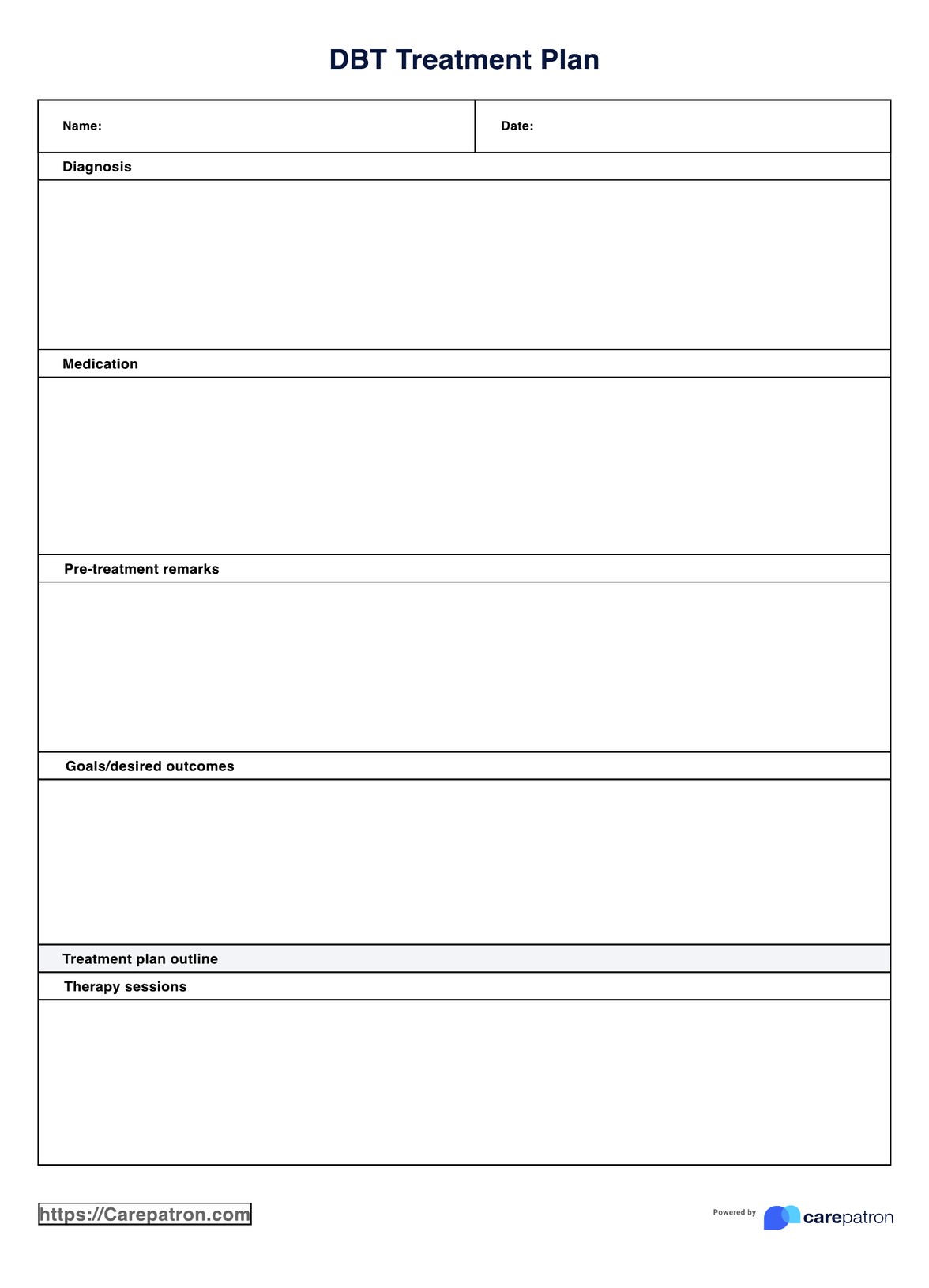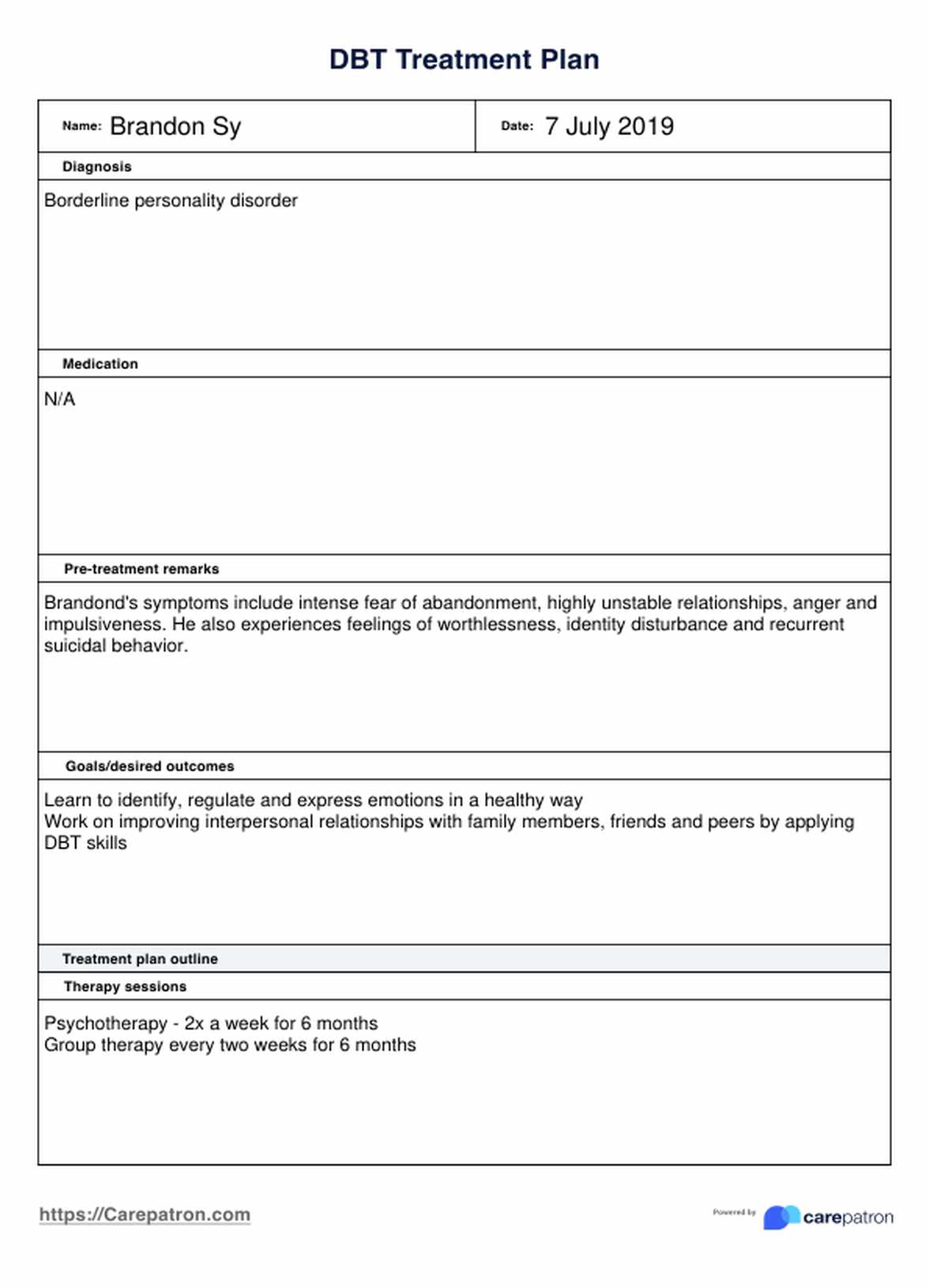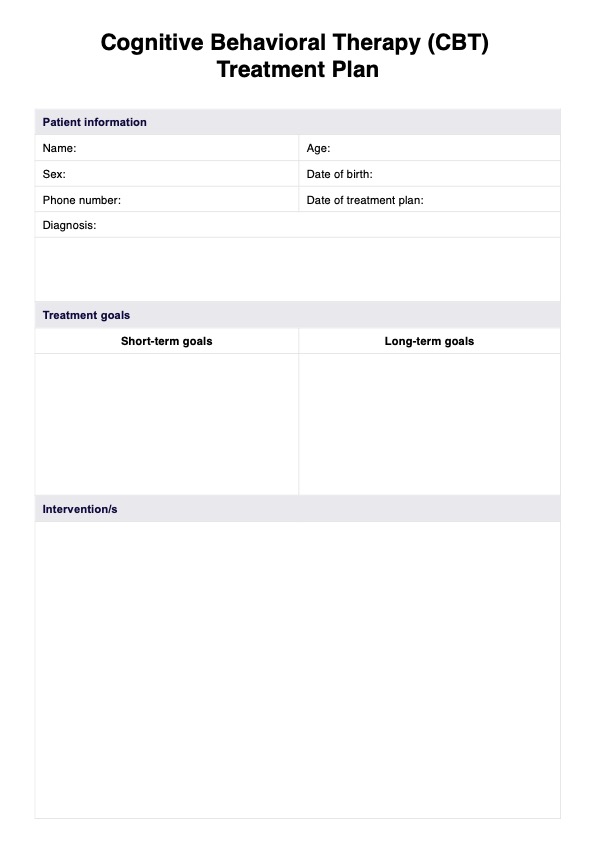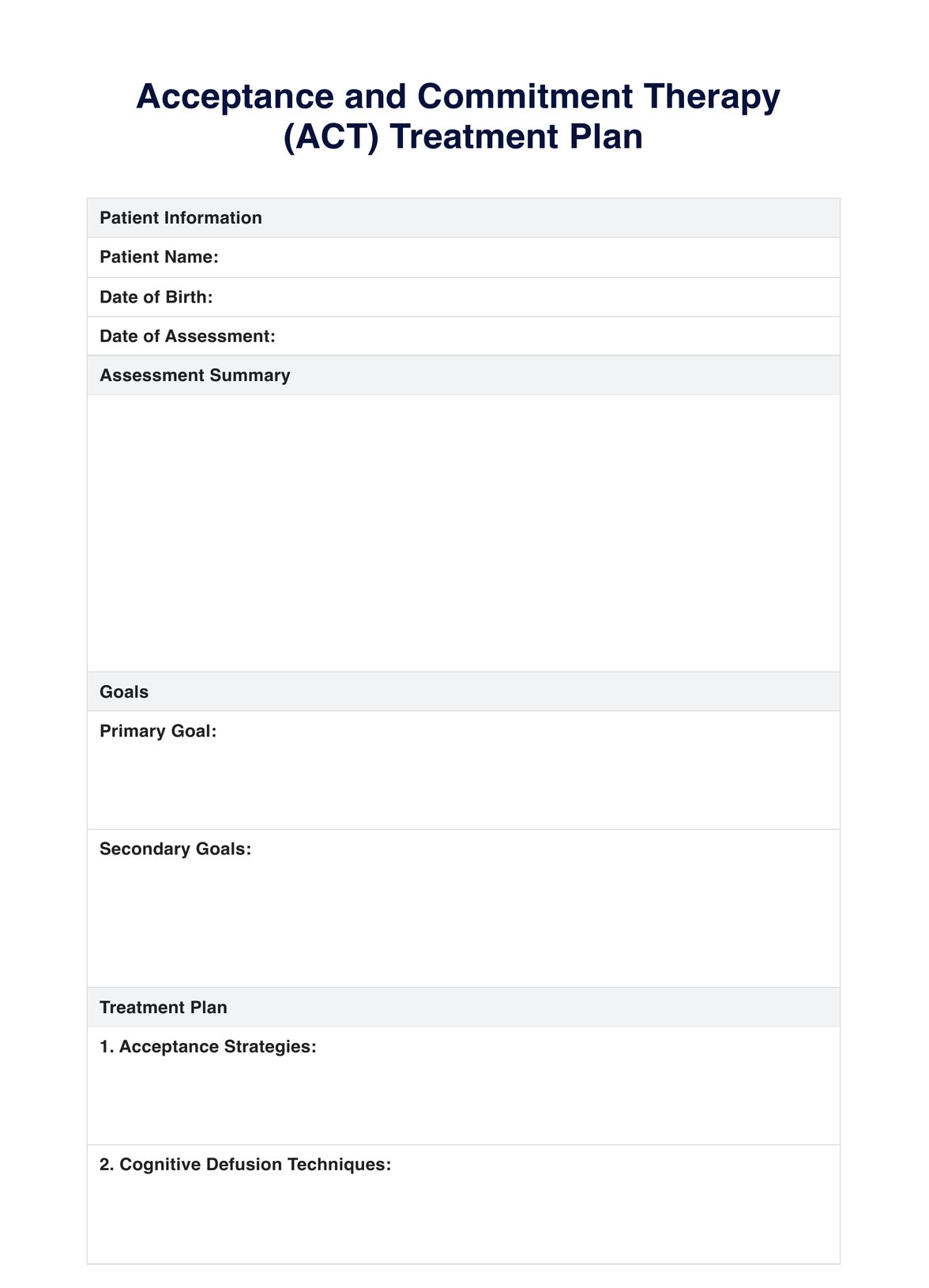DBT Treatment Plan
Dialectical Behavior Therapy (DBT) helps patients better manage their thoughts, emotions, and behaviors. Get access to our free DBT treatment plan template to get started.


What is a Dialectical Behavior Therapy (DBT) Treatment Plan?
A DBT Treatment Plan is a structured, comprehensive approach to therapy that focuses on helping individuals develop effective coping strategies and life skills to manage intense emotions, reduce problematic behaviors, and improve overall well-being. It is a form of cognitive-behavioral therapy that incorporates mindfulness techniques and emphasizes building a life worth living.
The treatment plan typically includes individual therapy sessions, group skills training, and phone coaching. In individual therapy, the therapist works with the client to identify and address specific target behaviors or challenges, such as self-harm, suicidal ideation, or interpersonal conflicts.
This mental health treatment plan is designed to be flexible and tailored to the individual's unique needs and goals, with a strong emphasis on validating the client's experiences and promoting self-respect. It is a collaborative process, where the therapist and client work together to develop a treatment plan that addresses the client's specific challenges and helps them build a life worth living.
DBT Treatment Plan Template
DBT Treatment Plan Example
What mental health conditions can DBT address?
Using DBT in the treatment process can address a wide range of mental health conditions, including:
Substance use disorders
By teaching skills like emotion regulation, distress tolerance, and mindfulness, DBT equips individuals with the tools to manage cravings, triggers, and difficult emotions without turning to substance use and other maladaptive behaviors.
Eating disorders
DBT has shown promising results in the treatment of conditions such as anorexia nervosa, bulimia nervosa, and binge eating disorder. The therapy's focus on developing a non-judgmental relationship with one's emotions and body can be particularly helpful for individuals struggling with disordered eating patterns.
Post-traumatic stress disorder (PTSD)
The therapy's emphasis on coping skills can help individuals cope with trauma-related symptoms, such as flashbacks, nightmares, and intense emotional reactions.
Anxiety disorders
The comprehensive approach of DBT, which includes building interpersonal effectiveness and addressing cognitive distortions, can be valuable for individuals facing various anxiety disorders and other mental health conditions.
Depression
DBT therapists focus on developing coping strategies and improving emotional regulation can be beneficial for individuals struggling with depression.
Other personality disorders
While initially developed for Borderline Personality Disorder (BPD), DBT has been adapted to treat mental health challenges involved in other personality disorders as well.
How to use this DBT Treatment Plan
Our DBT Treatment Plan template is quick and easy to use. You can follow these steps to get started:
Step 1: Download the plan
Access the free DBT Treatment Plan using the link on this page. You can also get a copy through the Carepatron app or the resources library.
Step 2: Customize the plan
Take some time to customize the plan according to your patient's needs. This includes outlining their primary goals of treatment, the timeline for when they should be achieved, and specific skills they'll need to work on.
Step 3: Review the plan
Review the plan with your patient to ensure they understand the goals and expectations of their treatment.
Step 4: Secure the form
Ensure you keep the treatment plan in a secure location or compliant digital storage, as this contains confidential patient information.
When would you typically use a DBT Treatment Plan?
You can use this treatment plan to treat individuals with a mental illness or disorder that requires DBT. This includes individuals with borderline personality disorder, post-traumatic stress disorder, substance abuse, and eating disorders. Similarly, you can use this tool to:
Gather pre-treatment information and track patient progress
Before starting treatment, you can use a DBT Treatment Plan to gather pertinent information, including goals, medical history, and current diagnoses. The plan will also help you track patient progress as the client works through their treatment using the skills and strategies you outlined.
Develop goals and expectations
The plan can help you outline the treatment goals and set clear expectations for you and your patient. Using this template, you can design a treatment targeting each individual's specific areas of need and attach a timeline to when those goals should be achieved.
Monitor skill development
Using the plan, you can also monitor skill development and practice. You can use the plan to record what skills you and your patients are working on in each session and what strategies they are using to develop those skills.
For more resources, explore our treatment plan template, interpersonal effectiveness skills, and dialectical behavior therapy tools to enhance your practice and patient outcomes.
Commonly asked questions
Dialectical Behavior Therapy (DBT) treatment is typically divided into four stages. The first stage focuses on achieving behavioral control and stabilizing the client's life, addressing any life-threatening behaviors or behaviors that interfere with therapy. The second stage aims to reduce post-traumatic stress and other disorders that may be present. The third stage helps the client achieve a life worth living by building a life worth living and addressing any remaining problems. The fourth and final stage focuses on further enhancing the client's quality of life and continued growth and development.
Dialectical Behavior Therapy (DBT) utilizes a variety of interventions to help clients develop skills and achieve their treatment goals. Some common DBT interventions include mindfulness exercises, emotion regulation techniques, distress tolerance strategies, and interpersonal effectiveness training. DBT therapists also employ behavioral analysis, validation, and problem-solving approaches.
The primary treatment goal of Dialectical Behavior Therapy (DBT) is to help clients build a life worth living. A DBT program typically involves reducing life-threatening and therapy-interfering behaviors, improving emotion regulation skills and distress tolerance, and enhancing interpersonal effectiveness and quality of life.





















-template.jpg)
























































































